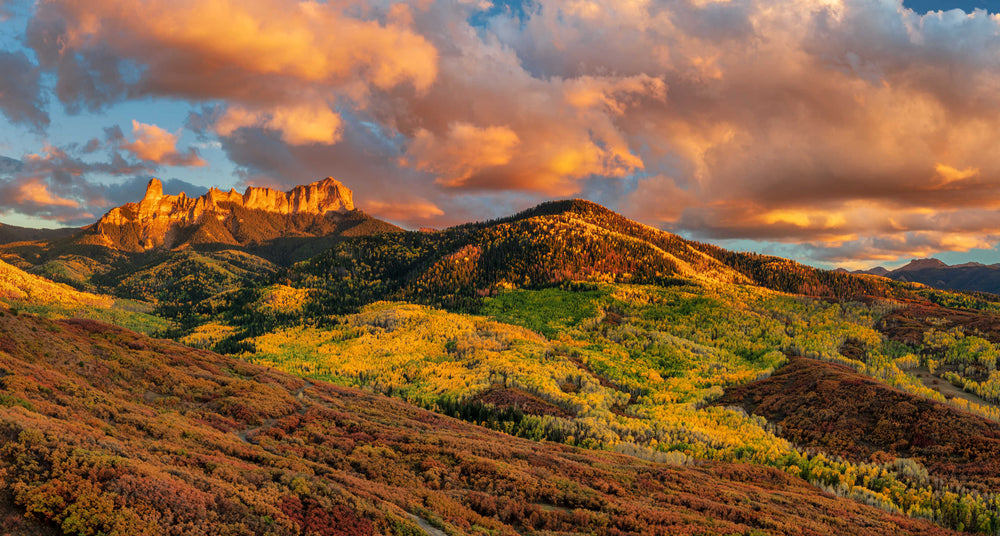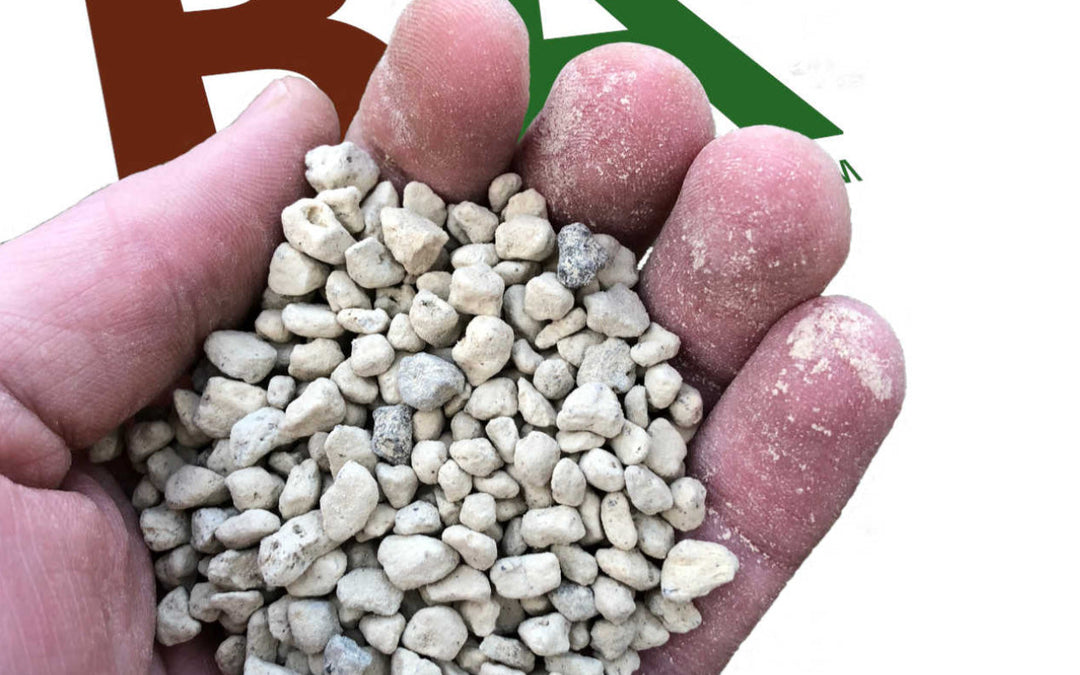Arctic ECO Green® Ice Melter: The Safest, Most Effective Product on the Market!
Winter is coming, and that means ice and snow! Rocky Mountain BioAg® has the solution - our Arctic ECO Green® Ice Melter. It's all-natural, fast-acting, and gentle on the environment. Plus, it's harmless around children and pets.
Don’t be caught in the cold this winter without a bag of Arctic ECO Green®. Pick some up today in-store, or check out our website to learn more about this amazing product! You'll be glad you did!
What’s in Arctic ECO Green’s® All-Natural Formula?
- Potassium acetate
- CMA
- Sodium chloride
Potassium, being a required nutrient to plant life, has long been known as a safe ingredient to melt ice safely, and the Sodium chloride gives this product the boost it needs to work down to very low temperatures. And the CMA provides a corrosion inhibitor to help offset the Sodium chloride. Arctic ECO Green® Ice Melter is, therefore, an excellent choice for those who want to be kind to the environment while still being effective at melting ice.
Arctic ECO Green® Ice Melt is Harmless Around Children and Pets
For those with children and pets, finding an ice melt that is safe to use around them can be quite a challenge. With so many brands on the market, it's hard to know which one to choose. Child and pet safety is our top priority here at Rocky Mountain BioAg®, which is why we chose to offer this product.
So go ahead and use it without worry! And if you're looking for a bonus, our ice melt doesn't contain any calcium chloride, so it won't burn your pet's paws as they walk on it. It's the perfect solution for a safe and happy winter!
Fast-Acting and Powerful Ice Melt
Fast-acting and powerful to -20° F (-29° C), Snow and ice storms generally occur between 0° and 32° Fahrenheit (-18° and 0° C). This is when the ice melt product will effectively do its job.

When the weather gets too cold, such as below -22° F (-30° C), an ice melt becomes impractical and will not work. In this really cold weather, one typically requires a traction aid/grit substance to prevent slips and falls. This is because, at this temperature, ice typically does not form. Instead, as the snow falls, it stays in its crystallized format and simply builds up in the form of compact snow. When the weather warms up, then melting and refreezing will occur and form ice build-ups.
How do Ice Melt Products Work?
The way they work is by lowering the freezing point of water. If you lower the freezing point below the outside temperature, then naturally, it will melt. There are a variety of ingredients that can be used to lower the freezing point of water, such as:
- Calcium chloride
- Magnesium chloride
- Sodium chloride
- Potassium chloride
These are all effective at melting ice, but they have different properties that make them suitable for different applications. For example, calcium chloride is very fast-acting & powerful to -25° F (-31° F), but it is also corrosive, so it can damage concrete surfaces. Magnesium chloride is not quite as fast-acting & powerful to 5° F (-15° C), but it is less corrosive.

Sodium chloride is fast-acting & powerful to 5° F (-15° C) like calcium chloride, but it is very damaging to vegetation, so it should only be used on walkways and other areas where plants are not present. Potassium chloride is fast-acting & powerful to -9° F (-23° C), but it is more expensive than other options, so it is not as widely used. Ultimately, the best ice melt for your needs depends on a variety of factors, including temperature, budget, and surface type.
Ice Melt and Concrete
Concrete is one of the most versatile and widely used building materials in the world. It is strong, durable, and easy to work with, making it an ideal choice for both small and large projects. Concrete is made up of a variety of ingredients, including cement, sand, gravel, and water. The exact proportions of these ingredients vary depending on the type of concrete being produced.
Although concrete is a very sturdy material, it can be damaged by exposure to certain chemicals. For this reason, it is important to be aware of the potential effects of various ice melting products on concrete. Sodium chloride, for example, can attack the metal rebar contained within the concrete when it absorbs into the material. This process can also damage surrounding vegetation, soil structure, and groundwater.

Calcium chloride tends to leave an oily residue on concrete surfaces, which can accelerate the hydration process and cause discoloration. Magnesium chloride, ammonium nitrate, and ammonium sulfate can all attack and disintegrate concrete, so it is important to avoid using these products near concrete surfaces.
By understanding the makeup of their concrete and the potential effects of various chemicals, people can help to ensure that their concrete stays in good condition for years to come. Damage to concrete is a common problem in cold weather climates. While the ice melt used is often blamed, the real culprit is the freeze/thaw cycle. By following a few simple tips, however, you can substantially reduce the risk of damage to your concrete.
5 Tips for Reducing Ice Melt Damage to Your Concrete:
- Remove slush and broken ice from the surface as soon as possible.
- Use a good quality ice melt product to prevent chemical damage and extend the freeze/thaw cycle.
- Try to prevent water build-up on the surface to reduce absorption.
- Ensure that your concrete is of high-quality construction to withstand your cold weather climate.
- Remember, do not use ice melt on new, damaged, or unsealed concrete.
Should I Use Ice Melt on New Concrete?
New concrete is always an exciting addition to any property. Whether it's a new driveway, patio, or sidewalk, the arrival of fresh concrete brings with it a sense of new beginnings. However, it's important to keep in mind that new concrete needs time to cure and settle before any ice melt products are applied.
Applying ice melt to new concrete less than 12 months old can weaken the concrete structure and make it more susceptible to damage in the future. In order to reduce the risk of slipping and falling, we recommend applying sand or gravel on the new concrete slab for added traction. With a little bit of care and patience, your new concrete will be a stylish and functional part of your property for years to come.
Why is Arctic ECO Green® Ice Melter Green?
Arctic ECO Green® Ice Melter is dyed a bright green color. This dye is environmentally friendly and, when used as directed, does not stain your walkway or road surface. The green color helps prevent overspreading of the product, which can save you money.
Arctic ECO Green® Ice Melter has an Anti-Corrosive Formula
Corrosion is a serious problem that can cause extensive damage to metal surfaces. It can be caused by a variety of factors, including exposure to the elements, chemicals, and even high temperatures. Left unchecked, corrosion can weaken metal structures, making them more susceptible to failure.
Therefore, it's important to use Calcium magnesium acetate, a professional-grade deicer that can be used as an alternative to road salt. It is approximately as corrosive as normal tap water and in varying concentrations can be effective in stopping road ice from forming down to around 10° F (−12° C).
Rocky Mountain BioAg® offers Arctic ECO Green® Ice Melter as a powerful all-natural deicer that is gentle on the environment and the surfaces it is applied to, as well as harmless around children and pets. It was designed with you - the environmentally conscious individual who wants a product that does not harm our planet – in mind.
You can pick up your bag of Arctic ECO Green® today and be prepared for whatever winter throws your way. Stay safe and protect yourself, your concrete, and the environment!








Leave a comment